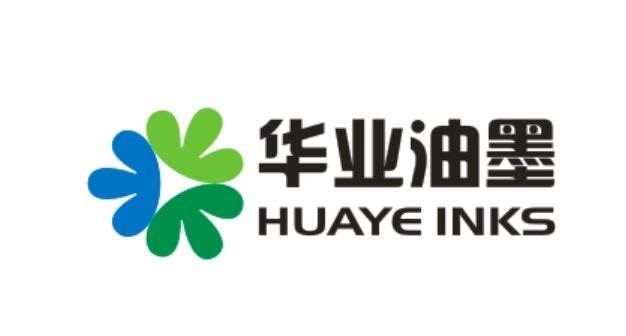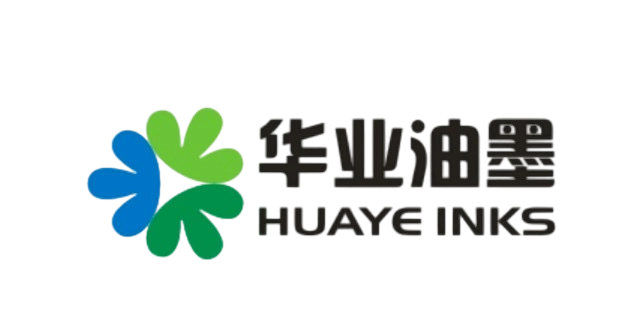Proprietates Siccationis Celeris et Eorum Impactus in Efficiencia Imprimendi Celeris
Quomodo Velocitas Siccationis Efficienciam in Flexurae Imprimendo Celeris Augmentat
Formulationes flexurae incarum celeriter siccantium tollunt angustias productionis quae ex humore remanente oriuntur, ut officinae imprimendi possint adipisci 18–24% maiorem exitum comparatis cum conventionalibus incis. Minuendo intermissiones inter imprimendum et processibus ulterioribus sicut laminando vel secundo caedendo, haec inca permittunt rotis celeritatem ultra 600 metra/minutum servare nec qualitate imprimendi immutata.
Mechanismi Siccandi: Evaporatio, Absorptio, et Cauterizatio UV Comparata
Systemata flexo moderna in tribus primariis methodis siccandis nituntur, quarum unaquaeque ad materialem specifica et productionis necessitates accomodata est:
| Mechanismus | Velocitas (m/min) | Consumptio Energiae | Compatibilitas Substrati |
|---|---|---|---|
| Evaporatio Thermo | 300–450 | Alta | Charta, Filmis non tectis |
| Assorbente | 200–350 | Humilis | Materiales Porosi |
| Coagulum UV | 600+ | Moderatum | Plastica, Folii |
In systematibus thermo, tempus siccandi melioratur 25% per 6°C incrementum temperaturae , dum tamen inks curantur UV-polymery plenum in minus 0.3 secundis. Haec flexibilitas siccandi methodos cum specificis opere congruere permittit dum alta velocitate perficitur.
Typographica Constantia et Qualis Rapid Ink Siccitatis
Rapidum inkerunt statim minuit punctum guadere variationem ad minus quam ±1.5%, certam coloris reproductionm servantem quae in emballatis necessaria est. Celeriter siccantes compositiones etiam offerunt 40% maior resistens ad inkerunt transferendum inter rotatione mutationes, multo minorem sordem a strigis aut offistetis in altis voluminibus.
UV-Curabilis Flexo Inkerunt: Rapidus Cura et Rheologica Stabilitas in Altis Velocitatis
UV-curabilis contra aqua-based ink compositiones: Performantia in altis velocitatis ambientibus
Inkis flexoribus curabilibus UV praestant praepotentiam super alternativis aquatis in applicationibus velocissimis propter earum coagulationem fere statim sub lumine ultraviolaceo. Sine necessitate evaporationis, quae tempus siccationis addit 15–30%, inki UV pressiones velocitatis excedentes 600 pedes/minuta adiuvant—40% velocius quam systemata aquata—et tamen reproductionem punctorum acutam servant (Praevidum Dati Mercatalis 2024).
Diluitio scissione et thixotropia: Quomodo inki flexorici UV reagunt ad conditiones alti scissoris
Tintae flexurae UV nunc praebent propriae dilutionis admodum spectabiles. Cum subiiciuntur his rapidis circa 10,000 secundis inversis quas videmus in cylindris anilox, viscositas eorum cadit inter 60 ad 80 percenta secundum recentia studia ab Zeller+Gmelin anno 2023. Quid hoc practicaliter significat? Tinctura multo melius fluit cum cylindri celerius vertunt, veluti 1,200 RPM, quod iuvat ne res turbarum sine creando ista molesta nebula procedant. Et ecce aliud spectabile: postquam ad substratum transferuntur, tincta rursus celeriter revertuntur. Circiter 85% originalis crassitiei intra brevem 50 millisecondorum restituitur. Haec celeris repositio multum adiuvat ad acies et lineas nitidas servandas, sive in materialibus quae tinctam facile absorbent sive in iis quae non.
Viscositatis stabilitas et tinctae repositio durante continuo rotatione preli
Inky UV servant stabilitatem reologica exceptionalem, cum mutorum viscositatis minus quam ±5% per 8 horas operationis, comparatum cum 15–20% derivationis in systematis solventibus. Haec consistentia confert ad 22% reductionem in sordibus tincturae pro iobis flexibilis compaginis ad altum volumen (Pira International 2023 data):
| Parametrum | Inkae Utravioletae | Inkae Aquaeae |
|---|---|---|
| Derivatio Viscositatis (8h) | 4.8% | 18.2% |
| Reductio Dejectionis | 22% | Limen fundamentale |
Commoda ex coagulatione instantanea cum technologia UV in applicationibus celeriter fiendis
Processus coagulationis UV tollit retentionem solventis, permittens statim post impressio processum. Haec potestas minuit inventarium producti in processu elaborationis 70% pro tabulis medicamentorum vesicularibus, praestans conformitatem cum normis FDA 21 CFR 174.5 pro residualibus solventibus <0.1%.
Inki Flexographica Aquae: Praemia Environmentalia et Difficultates Perfectionis
Aucta Inki Aquae Motivata a Regulationibus Environmentalibus et Causis Sustinendis
Translatio ad incaustos flexographicos aquae-based magno pondere a regulis environmentalibus sicut Europeae REACH directiva et Americae Clean Air Act praescribuntur. Haec praecepta fere cogunt manufactores ut emittant VOCs minuantur circiter 95% comparatione ad antiquas soluturas solvent-based. Nunc aquae-based optiones constituunt circiter dimidiam partem omnium applicatorum incaustorum amicorum in mercato hodie, et periti industriae praediciunt numerum usque ad 2025 ascendere. Quid facit hos incaustos tam placidos? Licebit corporibus ut tutores meliores materiales confectionis producere possint pro omnibus generibus ab albis cibariis ad matulas infantium sine compromissione qualitatis. Ex altera parte, postulatus pro incaustis solvent-based fere 18% demissus est ex initio 2020 praesertim quod corpora reperiant sibi crescenter onerosum esse ad standarda regulativa implenda simul cum crescentibus sollicitudinibus de salute servorum propter contactum chemicum.
Comparatio Efficentiae: Aquae-Based versus Solvent-Based Flexo Incausti
Inkis aquaeis certe praestantioribus pro salute et tutela operativa utendum est, sed haec vis est. Diutius desiccantur, id quod significat velocitatem pressorum typographicorum inter 20 et fortasse 30 percent minus velocem esse in opusculis festinantibus ubi velocitas maxime valet. Alterum negotium est quod haec inkis non tam adhaesiva sunt per se, ideoque non bene adhaerent superficiebus expolitae ut plumbago nisi prius aliquid praeparandum sit. Tamen, recentiores emendationes in arte resinas conficiendi hanc disjunctionem minuere. Formae praesentes tandem contra antiquas optiones solventes nituntur, quae attinent ad rubrum tolerantiam et colores vividos post impressionem.
Superando Siccitatis et Pressorum Velocitatis Defectus in Sublimitatis Celeritatis
Typographi, qui nuper incipiebant uti melioribus cultris aeris et siccatoribus infrarubris propter problemata in siccatione, haec instrumenta adiuvant celerius aquam evaporescere et tamen films sensitivos conservare. Secundum quasdam investigationes ex anno praeterito, cum temperies siccatorum inter 15 et 20 gradus Celsius calidiores factae sunt, lineae productionis circiter 12 percentius celerius movebantur pro impressionibus factis cum inks aquosis in materialibus polyethylenis. Nos etiam aliquid curiosi videmus - systemata mixta quae technologiam UV cum solutionibus aquosis iungunt. Hae systemata remedia ex utrisque sphaeris optima sumunt: amicitiam environmentalis solutionum aquosarum et tempora siccationis velociora ex methodis siccandis UV.
Adhaesio et Qualitas Typographiae in Substratis Diversis
Pertinacia Flexo Inki in Substratis Plasticis, Papireis, et Folii
Nunc incae flexographicae vere bene operantur in omnibus frequentissimis materiae imballagii inter quas plasticis PET et PP, praeterea tabulata cartacea etiamque difficilis res sicut laminula alluminii. Recens studium 2023 inspexit quomodo istae incae performant et invenit cum energia superficiei attingit circiter 40 dynes per centimetrum quadratum aut altius, adhaerent superficiebus polyethyleni cum circiter 95% efficacia. Pro illis nitidis superficiebus non porosis sicut laminis metallicis, incae flexo UV curatae quidem meliores sunt quia siccant fere statim quod coloribus diffundere prohibet. Haec siccitas celeris colorum consistentiam servat circa 98% qualitatis nive contra 84% tantum cum usu optionum traditorum solventium basium in cursibus productonibus celerum. Ratio cur ita multi manufactureri nunc convertuntur.
Fidam Adhaesionem in Imballagio Flexibili Sub Conditionibus Celerum Obtinere
Inkiæ pro celeri flexo prelo (300–600 m/min) formationem pelliculæ celerem et rheologiam stabilem postulant. Formulæ cum viscositate minore 62% fluctuationes viscositatis minuunt comparatis traditionalibus inkiis (2022 Flexo Adhesion Report), transferum constantem praestant supra 500 m/min. Cum viscositatis controllo circuito clauso iunctæ, hæ inkiæ ~0.5% variationem densitatis in cyclis productionis duodecim horarum efficiunt.
Officium Energiae Superficielis Substrati in Ink Bonding et Durabilitate Typographica
| Genus substrati | Energia Superficialis (dynes/cm²) | Modificationes Inki Requeruntur |
|---|---|---|
| Polypropylene | 29–31 | Tractatio Corona + promotores adhaesionis |
| Kraft Paper | 42–46 | Optimizatio inki aquosæ |
| Cinna PET | 40–42 | Resinae acrylati curabiles radiis UV |
In studium adhaesionis anni 2022 monstravit, quod augmentum energiae superficialis substrati per 15–20 dynes/cm² adhaesionem tincturae in filmis polyolefinis per 300% meliorat. Similis tensio superficialis tincturae ad energiam substrati (intra ±2 dynes/cm) defectus tegmenti in emballagis flexibilibus alimentariis per 73% minuit.
Studium Casus: Adimplenda Constantia Impressions in Emballagis Filmorum Multistratatum
Productor emballagii flexibilis princeps reductionem delaminationis tincturae in filmis stratificatis nonagintis per adoptionem tincturarum flexographicarum tolerantes superficiem cum technologia coagulationis geminae. Compositio combinavit coagulationem per radiationem ultravioleam pro formatione celeri filmi cum siccatione oxydativa secundaria, assecutus adhaesionem 99,2% trans totas temperaturas extremas (–40°C ad 121°C) et tamen celeritatem productionis 450 m/min sustinens.
Liber Qustionum F requenter P ropositarum
Quae sunt praecipua praemia tincturarum flexographicarum celeriter siccantum?
Tincturae flexographicae celeriter siccantes efficientiam productionis augent, diminuendo dilationes propter umorem, meliorando qualitatem impressionis, et permittendo processus post impressonem celeres.
Cur inquina flexoria curabilis UV praefertur ad inquinam basiam aquae in locis velocitatis magnae?
Inquina flexoria curabilis UV praefertur quod celeriter sub lumine ultraviolaceo coagulatur, permittens velociores celeritates impressoriae et meliorem qualitatem impressionis comparatas ad inquinam basiam aquae.
Quomodo inquina flexoria basiata aquae ambientem iuvat?
Inquina flexoria basiata aquae significanter minuit emissiones VOC, eam magis amicam ambientis reddens et convenientem regulis de sustentatione.
Quae sunt difficultates quas inquinae basiatae aquae in impressione velocitatis magnae incurrunt?
Inquinae basiatae aquae difficultates essicandi et adhaerendi in impressione velocitatis magnae incurrunt, quae per technologias essicandi provectas et systemata hybrida superari possunt.
Index Rerum
- Proprietates Siccationis Celeris et Eorum Impactus in Efficiencia Imprimendi Celeris
-
UV-Curabilis Flexo Inkerunt: Rapidus Cura et Rheologica Stabilitas in Altis Velocitatis
- UV-curabilis contra aqua-based ink compositiones: Performantia in altis velocitatis ambientibus
- Diluitio scissione et thixotropia: Quomodo inki flexorici UV reagunt ad conditiones alti scissoris
- Viscositatis stabilitas et tinctae repositio durante continuo rotatione preli
- Commoda ex coagulatione instantanea cum technologia UV in applicationibus celeriter fiendis
- Inki Flexographica Aquae: Praemia Environmentalia et Difficultates Perfectionis
-
Adhaesio et Qualitas Typographiae in Substratis Diversis
- Pertinacia Flexo Inki in Substratis Plasticis, Papireis, et Folii
- Fidam Adhaesionem in Imballagio Flexibili Sub Conditionibus Celerum Obtinere
- Officium Energiae Superficielis Substrati in Ink Bonding et Durabilitate Typographica
- Studium Casus: Adimplenda Constantia Impressions in Emballagis Filmorum Multistratatum
-
Liber Qustionum F requenter P ropositarum
- Quae sunt praecipua praemia tincturarum flexographicarum celeriter siccantum?
- Cur inquina flexoria curabilis UV praefertur ad inquinam basiam aquae in locis velocitatis magnae?
- Quomodo inquina flexoria basiata aquae ambientem iuvat?
- Quae sunt difficultates quas inquinae basiatae aquae in impressione velocitatis magnae incurrunt?



